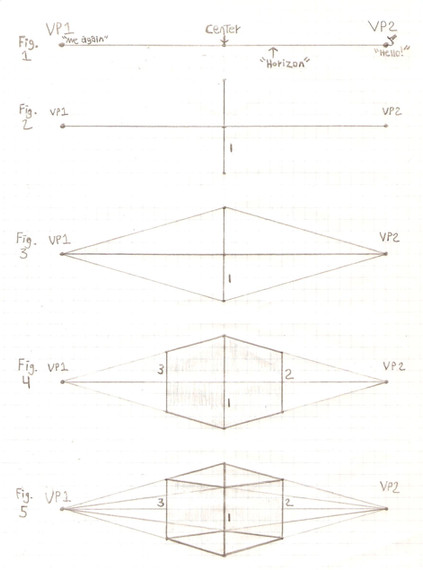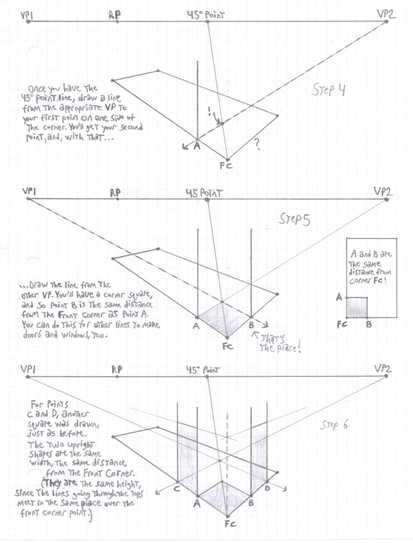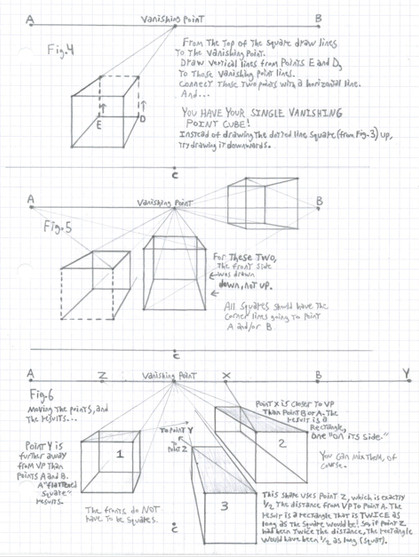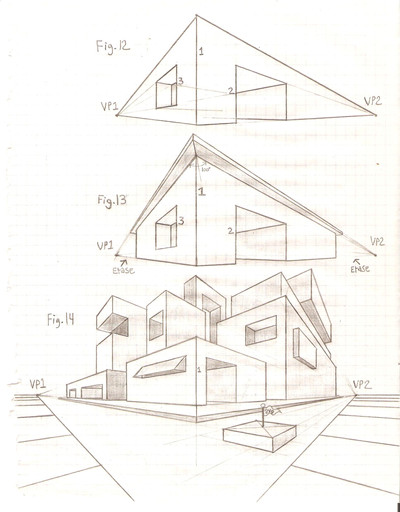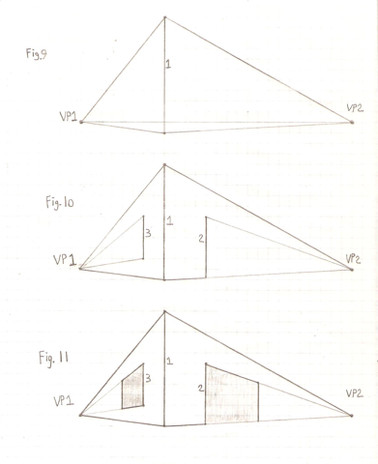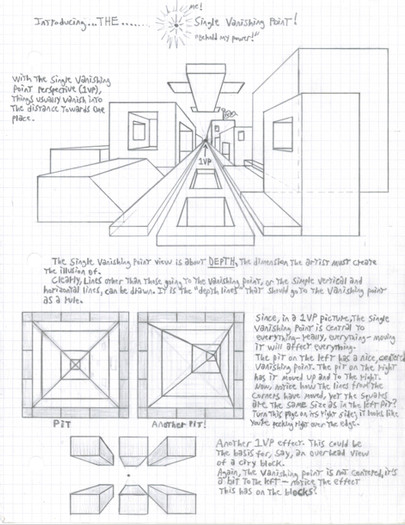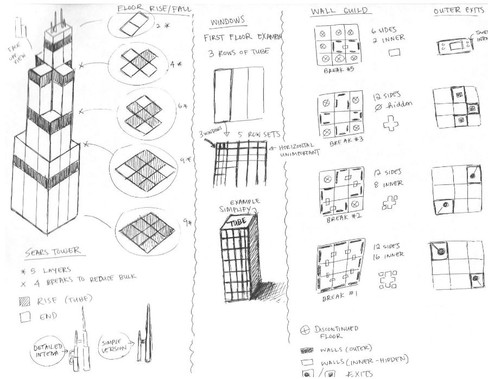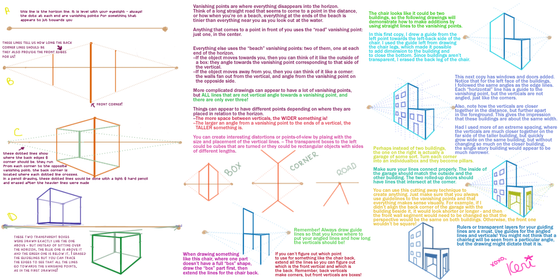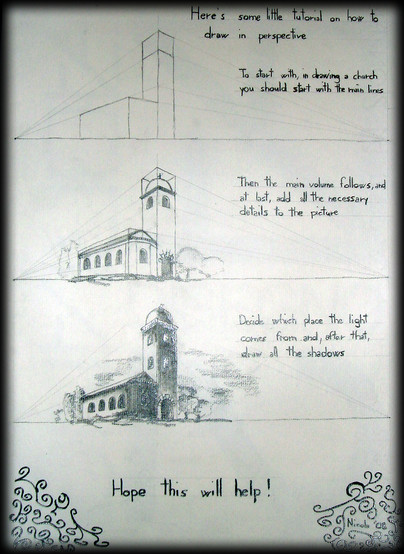HOME | DD
 GriswaldTerrastone — CWD 10
GriswaldTerrastone — CWD 10
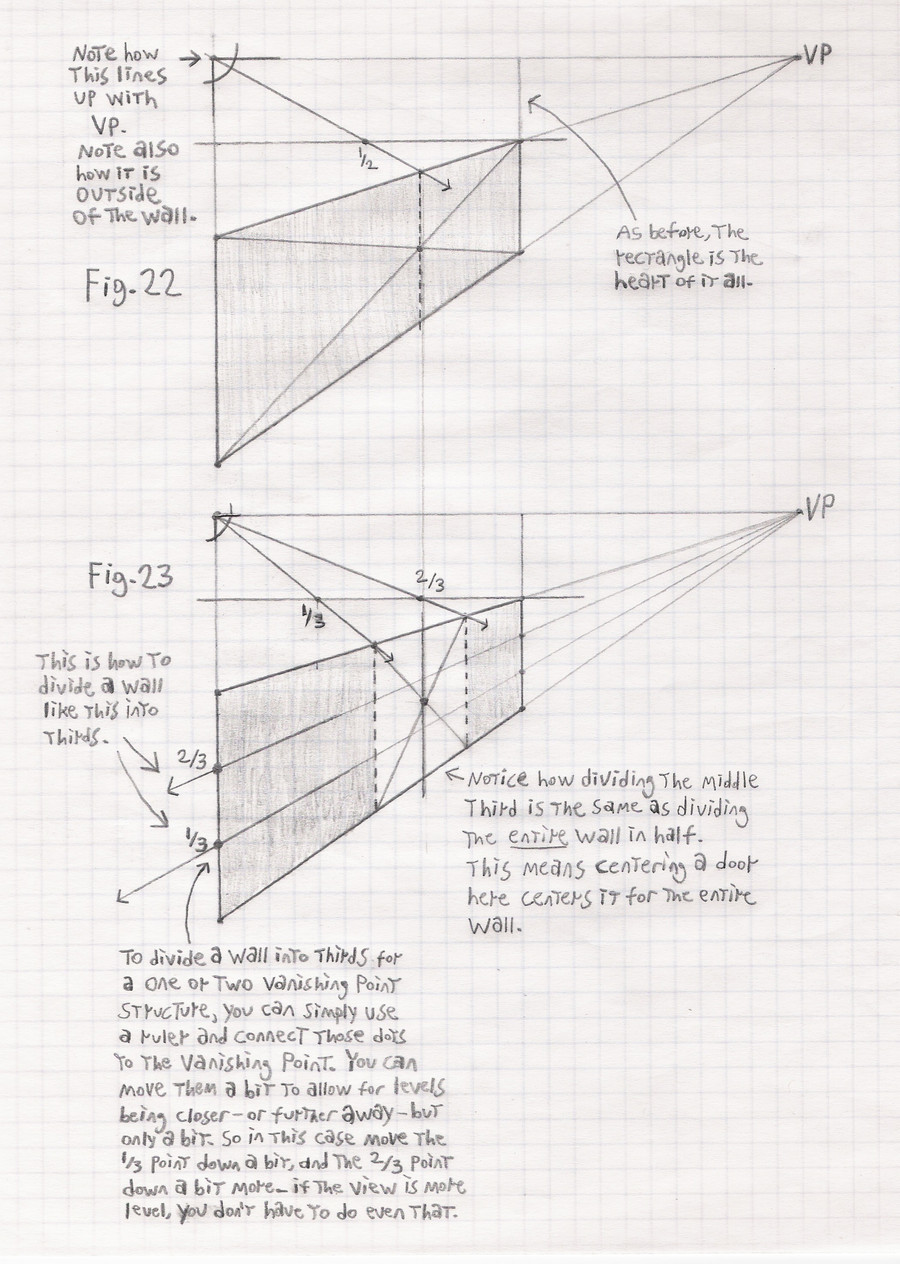
Published: 2010-12-08 23:35:34 +0000 UTC; Views: 3921; Favourites: 41; Downloads: 138
Redirect to original
Description
This page has the trickiest kind of wall for dividing using the horizontal line technique.Here both the top AND bottom of the wall are on one side of the horizon!
This one stumped me for a while...hours, in fact!
But...here it is!
In Figure 22, a wall has been drawn with both top and bottom below the horizon. NOTHING is lined up with it here.
Although it is more complicated than the other walls, don't worry- you just have to add one extra step, and look at Figure 22, to see that it isn't horribly difficult at all, once you know how.
(It was just getting to that "know how" point that was a bother!)
From the horizon draw a vertical line- that is, a line perpendicular to the horizon- right to the side of the wall furthest from the Vanishing Point. You now have a right angle, and it will be from this angle that you draw the lines through the horizontal line- which will be just a bit more difficult this time.
From the corner of the wall closest to the Vanishing Point draw a horizontal line- that is, perpendicular to the one you just drew- all the way to the wall where we drew that other line, all as shown. This is the wall furthest from the Vanishing Point.
You now have your horizontal line and the corner from which to draw the lines that will tell you how to divide up the wall.
I found the halfway point of the horizontal line (again, 3cm) and drew a line from the corner on the horizon through it, ending this time on the top of the wall (since the wall was below the horizon). From there, just drop the vertical line, and the wall is divided in two. To make sure, I drew in the "X," and the line does go through the middle of it. It works!
That's it.
For Figure 23, once again divide up the horizontal line, in this case into thirds, draw the lines from the corner on the horizon through the horizontal line- and again, end on the top of the wall. Drop the vertical lines, and the wall is divided into three parts. I made sure by using the "X" method, which was close enough here to prove it.
Oh- if you'd like to see how it would work if the wall was ABOVE the horizon, then just turn the page upside-down.
Here I added something extra- I used the "X" method to divide the middle third in half, and you can see that this line just happens to coincide with where the entire wall would be divided in half. Try using the horizontal line method to divide the entire wall in half here, and see waht happens!
With this method, you can divide the wall, or most other things drawn in this way, in 2, 3, 4, 5, 6, 7, 8 parts...or more, if you so wish!
Extra extra: For Figure 23, I also divided the wall into horizontal thirds- all I did was divide the end of the wall into thirds, and then draw lines from the Vanishing Point to those points. For the most part, especially with things drawn using one or two vanishing points, this will do nicely. You can shift the points just a bit to make more distant levels smaller than closer ones in some cases, like with extreme angles, but even that will often not be necessary.
Good luck and hope this helped!







